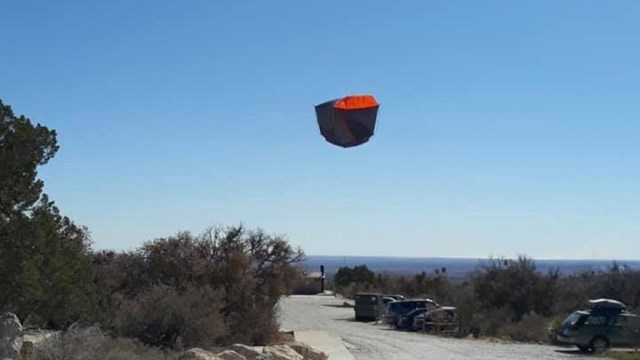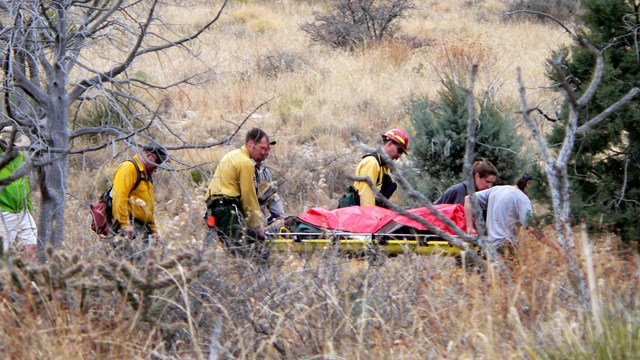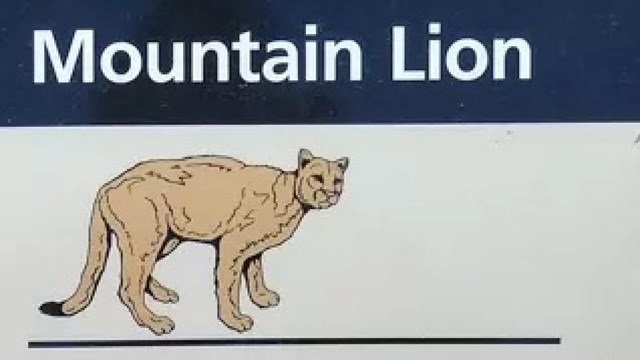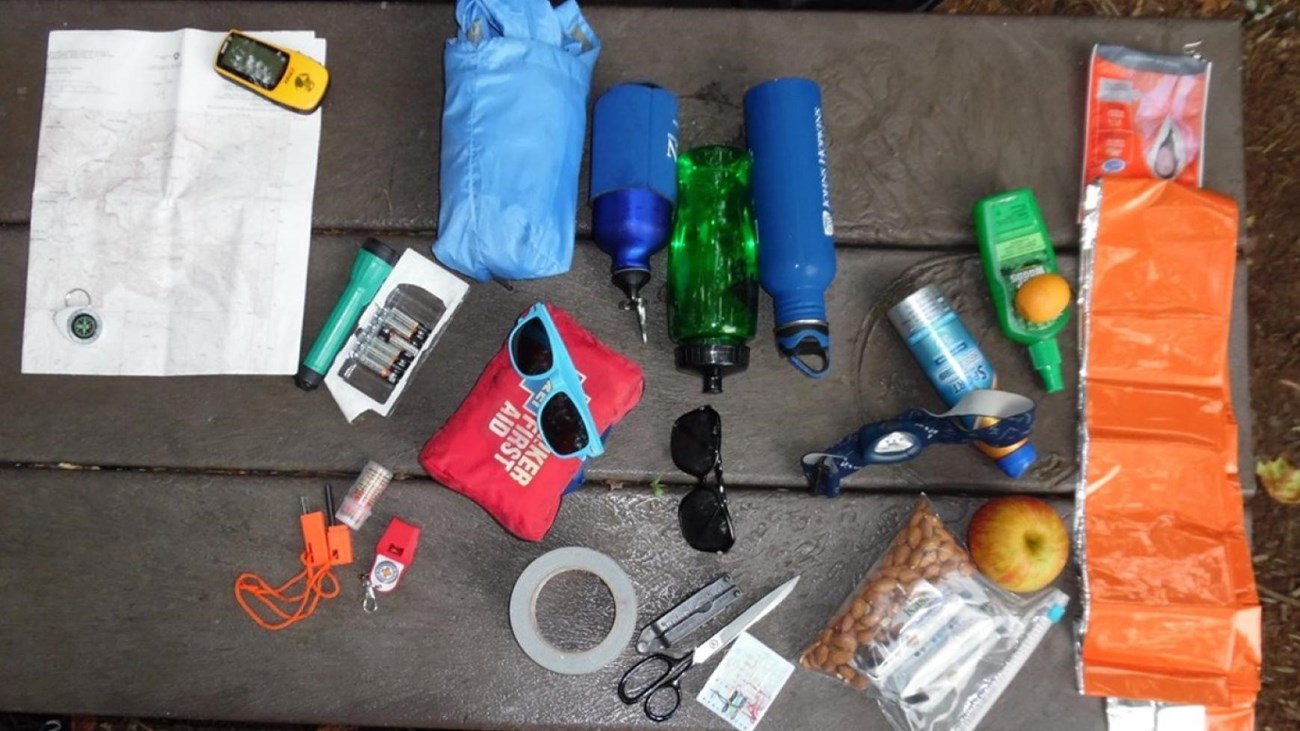As you enjoy the splendor of this great wilderness area, make safety a priority. By giving forethought to your actions you can have a safe, exciting, and rewarding experience in Guadalupe Mountains National Park.
Goods & Services
Visiting Guadalupe Mountains requires some planning to ensure that your experience is a pleasant one. Below is a list of things to remember when visiting the park.
- There is no gasoline available in the park. In Texas, the nearest communities with full services are Van Horn (60 miles south), and El Paso (120 miles west). When traveling from New Mexico, Whites City is the last place that offers gas, diesel, food and ice.
- We're not kidding. No gas is available for 35 miles in either direction from the visitor center. Plan accordingly.
- Campgrounds offer primitive dry camping for both tents and RVs. Other than restrooms and potable water, there are no other amenities. There are no lodges in the park.
- Bring the food you need. There is no restaraunt or grocery in the park.
Heat
Hiking in the desert requires some planning ahead of time to ensure a safe and successful hike. Make sure to always:
- Carry plenty of water. There is no water available along trails or in the wilderness. Make sure to carry at least one gallon per person, per day.
- Dress appropriately. Wear sunscreen, hats, long sleeve shirts and long pants.
- Hike during appropriate times. Make sure to start early in the day to avoid the mid-day summer heat.
- Know the signs of heat-related illnesses: dehydration, heat exhaustion, and heat stroke.
Hiking
Trails in the Guadalupe Mountains vary in difficulty and require some form of preparation.
- Carry a map and compass/gps. Make sure that you know how to use them.
- Always let someone know your plans. Make sure they know where you are going and when you will return.
- Carry a pack with appropriate gear: water, flashlight, map, etc.
Weather
Weather in the mountains can be unpredictable.
- Make sure to check the weather before leaving for your hike.
- Summer days can bring high temperatures and beware of quickly oncoming thunderstorms. If you see lightning, move quickly to a safe place. Avoid hilltops, ridges, and flat open areas.
- Elevation plays a role in weather.
- Pine Springs is at 5,600 feet in elevation.
- The Sand Dunes on the west side of the park are 2,000 feet lower; plan on it being ten degrees warmer.
- Guadalupe Peak and the high wilderness are 2,000 feet higher; plan on ten degrees cooler, and wind speeds ten miles per hour faster.
Wind
- November through March is the windy season in the Guadalupe Mountains, with winds above 30MPH often, and gusts ranging from 50-80MPH.
- Hiking on open trail will be challenging if the wind speed is at 40mph.
- If the wind speeds are up to 50mph, it’s dangerous to continue for even experienced hikers. If the wind speeds exceed 55mph, then you should turn back immediately if you don’t want to risk an accident. 70MPH wind gusts are the equivelent of a F1 tornado.
- In strong winds, your balance may become compromised, increasing the risk of slips and falls. When hiking during high winds, you should always be prepared to turn around. You should prioritize your own safety above all else in windy conditions.
Climbing is Prohibited
Technical Rock Climbing is prohibited in ALL areas of the park.
Most of the limestone rock within Guadalupe Mountains National Park is highly fractured and friable. These conditions create a situation where the rock is loosely jointed and easily dislodged, resulting in far less than desirable climbing conditions. Technical climbing activities are those that include the use of technical aids, including rappelling or unaided free climbing of cliff faces done without utilizing technical aids.
Wildlife Encounters
Black bears, mountain lions, javelinas, coyotes may be encountered on trails, and skunks frequent campgrounds. Although they sometimes appear tame, all of the animals in the park are wild, and could pose a threat to your health and safety if you attempt to approach or feed them.
- Never feed wildlife.
- Store all food, coolers, cooking utensils, and toiletries in a hard-sided vehicle, preferably in the trunk of your car. Use available food storage lockers in campsites.
- Dispose of garbage properly. Throw garbage in the trash cans provided.
- Watch children closely; never let them run ahead or lag behind.
- If you encounter a bear or mountain lion, do not run, but back away to get out of range. If you feel threatened by a bear or lion, hold your ground, wave your arms, throw stones, and shout; never run. Keep groups together, look large.
- Venomous snakes, scorpions, spiders, and centipedes are active during warmer months. Inspect shoes, sleeping bags and bedding before use. Carry a flashlight at night. Pay attention to where you walk and place your hands. Consider wearing high boots or protective leggings while hiking.





